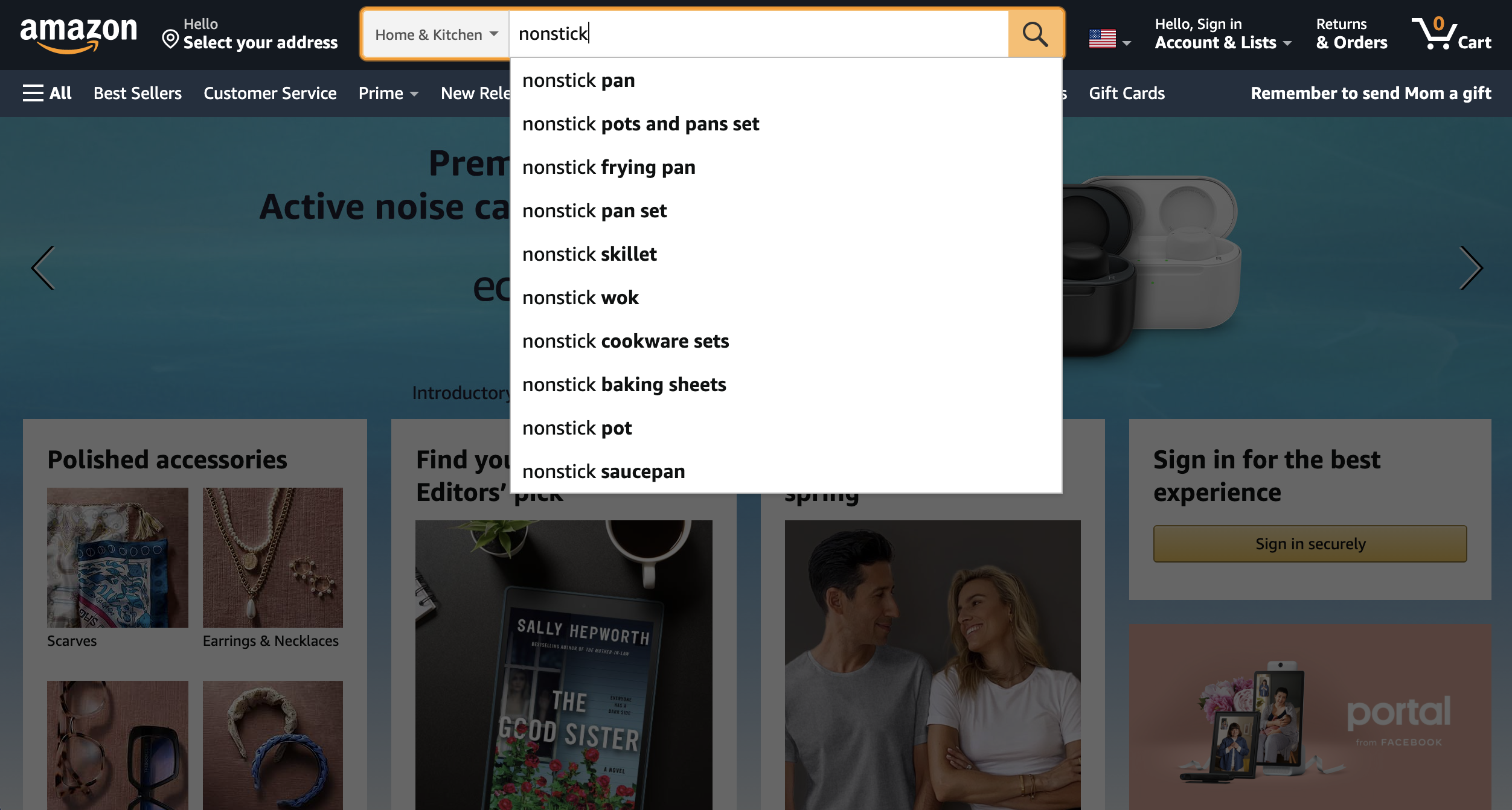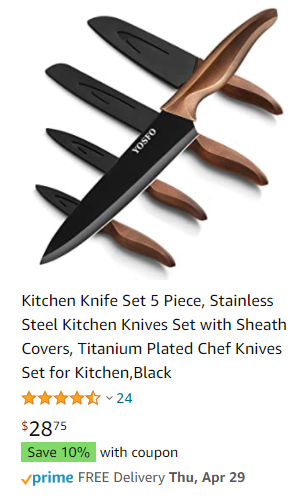Editor’s note: Thank you to e-commerce entrepreneur Tim Jordan of Private Label Legion for this guest post on Search Find Buy. In November 2021, Amazon clarified that Search Find Buy is a violation of its terms of service.
When it comes to selling on Amazon, people think you sell products. Well, they are wrong. We sell keywords.
Sure, there is some true marketing, the need for a high-quality product, and salesmanship when it comes to getting sales conversions. But much of the Amazon game is about focusing on specific keywords that you decide are relevant to your product and want to target. Then, you pull out a bag of tricks and convince Amazon that it should show your product on the first page (and, hopefully, first position) of search results for that specific keyword.
I would surmise that 75% of the effort that goes into successfully selling a product on Amazon is in the organic placement of your target keywords on the first page of search results.
I’ve been selling since 2015, and I’ve seen a ton of different methods to help you achieve Page 1 status. I could list them all here — and I’m going to talk about one in particular called Search Find Buy (SFB) — but I think it’s more important to first talk about the purpose behind these methods.
To do that, we need to discuss three little characters: A10.
What is the Amazon A10 algorithm?
There is a bit of folklore in the Amazon seller space when it comes to the A10 algorithm and, for that matter, its predecessor A9. I remember when Amazon would never officially admit that A9 truly existed!
The company has since started using the phrase openly, but it is still a bit misunderstood.
Amazon is a search engine. It is similar to Google, YouTube, and even Pinterest. By definition, a search engine takes your query (the keywords or phrase you type in the search bar) and attempts to match it with the most relevant options.
For example, if I were to go to Google and type “Yeezy Boost Shoes,” Google would throw me all sorts of pages, shopping listings, and images for a Yeezy shoe. It would not show me a banana. Or an iPhone case. Or a monster truck (although that would be funny). All of these results are populated because the search engine matches your query with the best options.
Amazon does the same thing. When I type “kitchen knife,” Amazon wants to show me a kitchen knife. Amazon makes money when products sell, so it knows that the best way to sell is to show the best product offering for a specific keyword. That product is the one most likely to convert, or sell, when a customer sees it.
Back to A10. According to seller folklore, A10 is just the 10th iteration of the Amazon search engine. Amazon quietly released it in late 2020. So far, It looks like Amazon will just keep improving what it has.
Optimizing for the A10 algorithm
Let’s keep going. I promise I’ll talk about Search Find Buy in a moment.
Say I’m selling kitchen knives. We know that I want to be on Page 1 for the keyword “kitchen knives.” Now I have to convince the A10 robots that my knife is the best.
There are a lot of parameters the A10 algorithm looks at to determine who gets to appear on that elusive Page 1. Seller authority is a huge factor. You’ve also probably heard of keyword optimization, backend keywords, impressions, pay-per-click (PPC), click-through rate (CTR), and so on. All of those create the same result: someone buying your product. That is the main thing Amazon cares about.
So, if I search “kitchen knife” on Amazon and scroll through a few pages of options, and I buy an option on the third page of results, I am telling Amazon that the item I purchased is the most relevant for the keyword “kitchen knife.” This will help bump up that product’s rank.
The image below is for a random listing I selected on the third page of the “kitchen knife” search results page on Amazon. Notice that Amazon, even in the product page, creates a unique URL that says I found this product using the query “kitchen knife” as keywords.
Following me?
Amazon knows which keywords we use to search, then tries to sort the most relevant products based on what we buy. People search a keyword, find the one they want, and buy it. Search, Find, Buy.
Ranking: a brief history
We know that we need to convince Amazon that our product is the most relevant and the one everyone wants to buy, tied to specific keywords. But how do we do it?
As I talked about earlier, there are URL triggers and indicators in almost all of the searched Amazon page listings. This means when someone searches for a keyword and finds a product, that product’s URL continues to indicate the keywords attached to the product.
A few years ago, some really smart people figured out that they could drive traffic directly to those URLs with special promotions and thus convince Amazon that the sales were coming from actual searches. This was HUGE in the art of ranking! There are super URLs, supreme URLs, and a host of others.
But, there is a problem.
When we learn how to manipulate the algorithm with ranking hacks, we degrade it. We can cheat the system so much that we could, theoretically, cause a kitchen knife to show up on Page 1 when someone searches “Yeezy Boost Shoes”!
Since Amazon wants to create the best buyer experience possible, it has to protect the sacred A10 from gross manipulation. Over the years, “cheated” URLs and other ways to trick the old A9 algorithm lost their effectiveness. There had to be a better way.
What is Search Find Buy?
Time to talk about Search Find Buy.
Let’s review for a minute, but only a minute. This one is easy:
If we want our products to show up on Page 1 for a keyword, we must convince the A10 algorithm that we are the best match. Amazon is reducing the effectiveness of the hacks and cheats to do this. Therefore, we must create an organic and natural system. We literally need to get someone to go to Amazon, search a specific keyword, find ours, and buy it. And there are a lot of services that now do this.
I won’t get into too many specifics, but generally speaking, a Search Find Buy service is needed because we can’t just find people off the street to perform these functions. However, there are people that love free products and money! And these groups help us create an SFB experience.
The best SFB services have curated audiences and groups that are not generally attached to Amazon sellers in any way, so Amazon has little to no way of knowing that they are not organic.
To use an SFB company, I would let the service know my product ASIN, the keywords I want to target, and how many units a day I want purchased through the system. The service will then send its buyers specific instructions.
Those instructions would look something like this:
- Go to Amazon and type “kitchen knife.”
- Scroll through pages until you find this listing:
3. Buy it.
4. After you purchase and receive it, we will refund you the cost of the product plus (insert dollar amount here, varies by service), and you get to keep the product.
The “buyer” will be paid via PayPal. You, the seller, will pay that refund cost plus the service fee from the SFB business. And the rest is history!
You’ve just convinced Amazon that this product, when searching specific keywords, is the most relevant. There are other components to the system that are somewhat proprietary to the various services, but this is pretty much the standard method.
Does Search Find Buy actually work? Is it within Amazon’s Terms of Service?
Great questions. At the risk of pissing off my friends who run SFB services, I will say no, it is not within Amazon TOS.
Amazon has very strict rules against manipulating rank. And when you put this through the basic “Is it manipulating rank?” sniff test, it most certainly is. By paying someone, you are forcing a situation that is not 100% authentic.
The good news for those of you who may want to engage in this method is that it’s hard to get caught by Amazon. As long as the service you use doesn’t publicly display the products, or use the same buyers constantly, or ask the buyers to leave reviews, it is super hard for anyone to see what’s going on.
You might be wondering: Tim, do YOU use SFB? And I would say that I won’t ever publicly endorse anything that is not 100% white hat and within Amazon TOS.
Search Find Buy is extremely controversial. Amazon doesn’t allow it. However, I will tell you that I know for a fact that Search Find Buy does work!
Tim Jordan is the CEO and founder of Private Label Legion, a community for e-commerce sellers, and chief growth officer for e-commerce fintech company SellersFunding. He also hosts the AM/PM Podcast and currently owns, and has exited, multiple e-commerce brands.








